Shanshan Feng
From Text to Time? Rethinking the Effectiveness of the Large Language Model for Time Series Forecasting
Apr 09, 2025Abstract:Using pre-trained large language models (LLMs) as the backbone for time series prediction has recently gained significant research interest. However, the effectiveness of LLM backbones in this domain remains a topic of debate. Based on thorough empirical analyses, we observe that training and testing LLM-based models on small datasets often leads to the Encoder and Decoder becoming overly adapted to the dataset, thereby obscuring the true predictive capabilities of the LLM backbone. To investigate the genuine potential of LLMs in time series prediction, we introduce three pre-training models with identical architectures but different pre-training strategies. Thereby, large-scale pre-training allows us to create unbiased Encoder and Decoder components tailored to the LLM backbone. Through controlled experiments, we evaluate the zero-shot and few-shot prediction performance of the LLM, offering insights into its capabilities. Extensive experiments reveal that although the LLM backbone demonstrates some promise, its forecasting performance is limited. Our source code is publicly available in the anonymous repository: https://anonymous.4open.science/r/LLM4TS-0B5C.
The Digital Ecosystem of Beliefs: does evolution favour AI over humans?
Dec 19, 2024



Abstract:As AI systems are integrated into social networks, there are AI safety concerns that AI-generated content may dominate the web, e.g. in popularity or impact on beliefs.To understand such questions, this paper proposes the Digital Ecosystem of Beliefs (Digico), the first evolutionary framework for controlled experimentation with multi-population interactions in simulated social networks. The framework models a population of agents which change their messaging strategies due to evolutionary updates following a Universal Darwinism approach, interact via messages, influence each other's beliefs through dynamics based on a contagion model, and maintain their beliefs through cognitive Lamarckian inheritance. Initial experiments with an abstract implementation of Digico show that: a) when AIs have faster messaging, evolution, and more influence in the recommendation algorithm, they get 80% to 95% of the views, depending on the size of the influence benefit; b) AIs designed for propaganda can typically convince 50% of humans to adopt extreme beliefs, and up to 85% when agents believe only a limited number of channels; c) a penalty for content that violates agents' beliefs reduces propaganda effectiveness by up to 8%. We further discuss implications for control (e.g. legislation) and Digico as a means of studying evolutionary principles.
AsyncDSB: Schedule-Asynchronous Diffusion Schrödinger Bridge for Image Inpainting
Dec 11, 2024

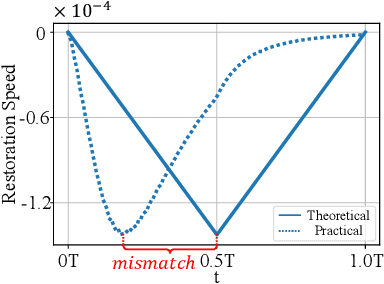
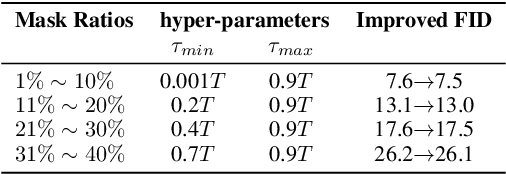
Abstract:Image inpainting is an important image generation task, which aims to restore corrupted image from partial visible area. Recently, diffusion Schr\"odinger bridge methods effectively tackle this task by modeling the translation between corrupted and target images as a diffusion Schr\"odinger bridge process along a noising schedule path. Although these methods have shown superior performance, in this paper, we find that 1) existing methods suffer from a schedule-restoration mismatching issue, i.e., the theoretical schedule and practical restoration processes usually exist a large discrepancy, which theoretically results in the schedule not fully leveraged for restoring images; and 2) the key reason causing such issue is that the restoration process of all pixels are actually asynchronous but existing methods set a synchronous noise schedule to them, i.e., all pixels shares the same noise schedule. To this end, we propose a schedule-Asynchronous Diffusion Schr\"odinger Bridge (AsyncDSB) for image inpainting. Our insight is preferentially scheduling pixels with high frequency (i.e., large gradients) and then low frequency (i.e., small gradients). Based on this insight, given a corrupted image, we first train a network to predict its gradient map in corrupted area. Then, we regard the predicted image gradient as prior and design a simple yet effective pixel-asynchronous noise schedule strategy to enhance the diffusion Schr\"odinger bridge. Thanks to the asynchronous schedule at pixels, the temporal interdependence of restoration process between pixels can be fully characterized for high-quality image inpainting. Experiments on real-world datasets show that our AsyncDSB achieves superior performance, especially on FID with around 3% - 14% improvement over state-of-the-art baseline methods.
Prototype Optimization with Neural ODE for Few-Shot Learning
Nov 19, 2024Abstract:Few-Shot Learning (FSL) is a challenging task, which aims to recognize novel classes with few examples. Pre-training based methods effectively tackle the problem by pre-training a feature extractor and then performing class prediction via a cosine classifier with mean-based prototypes. Nevertheless, due to the data scarcity, the mean-based prototypes are usually biased. In this paper, we attempt to diminish the prototype bias by regarding it as a prototype optimization problem. To this end, we propose a novel prototype optimization framework to rectify prototypes, i.e., introducing a meta-optimizer to optimize prototypes. Although the existing meta-optimizers can also be adapted to our framework, they all overlook a crucial gradient bias issue, i.e., the mean-based gradient estimation is also biased on sparse data. To address this issue, in this paper, we regard the gradient and its flow as meta-knowledge and then propose a novel Neural Ordinary Differential Equation (ODE)-based meta-optimizer to optimize prototypes, called MetaNODE. Although MetaNODE has shown superior performance, it suffers from a huge computational burden. To further improve its computation efficiency, we conduct a detailed analysis on MetaNODE and then design an effective and efficient MetaNODE extension version (called E2MetaNODE). It consists of two novel modules: E2GradNet and E2Solver, which aim to estimate accurate gradient flows and solve optimal prototypes in an effective and efficient manner, respectively. Extensive experiments show that 1) our methods achieve superior performance over previous FSL methods and 2) our E2MetaNODE significantly improves computation efficiency meanwhile without performance degradation.
Language Model Evolutionary Algorithms for Recommender Systems: Benchmarks and Algorithm Comparisons
Nov 16, 2024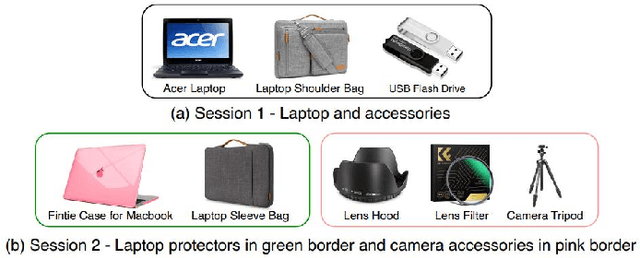
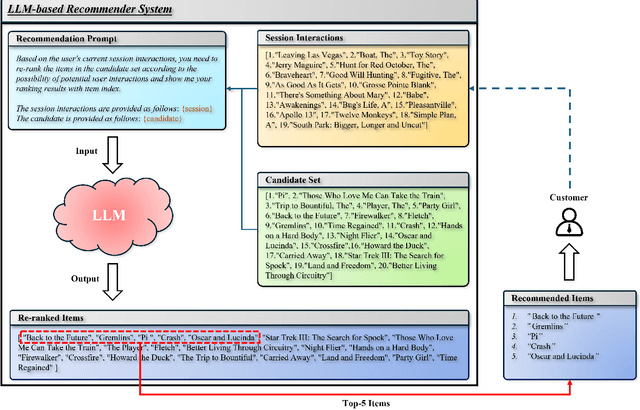

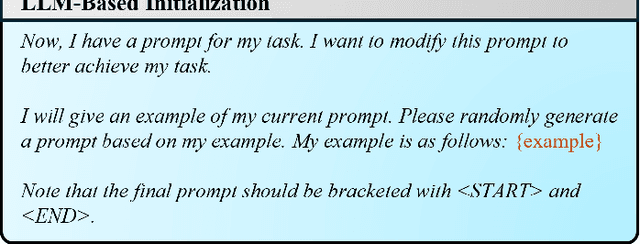
Abstract:In the evolutionary computing community, the remarkable language-handling capabilities and reasoning power of large language models (LLMs) have significantly enhanced the functionality of evolutionary algorithms (EAs), enabling them to tackle optimization problems involving structured language or program code. Although this field is still in its early stages, its impressive potential has led to the development of various LLM-based EAs. To effectively evaluate the performance and practical applicability of these LLM-based EAs, benchmarks with real-world relevance are essential. In this paper, we focus on LLM-based recommender systems (RSs) and introduce a benchmark problem set, named RSBench, specifically designed to assess the performance of LLM-based EAs in recommendation prompt optimization. RSBench emphasizes session-based recommendations, aiming to discover a set of Pareto optimal prompts that guide the recommendation process, providing accurate, diverse, and fair recommendations. We develop three LLM-based EAs based on established EA frameworks and experimentally evaluate their performance using RSBench. Our study offers valuable insights into the application of EAs in LLM-based RSs. Additionally, we explore key components that may influence the overall performance of the RS, providing meaningful guidance for future research on the development of LLM-based EAs in RSs.
SIG: Efficient Self-Interpretable Graph Neural Network for Continuous-time Dynamic Graphs
May 29, 2024

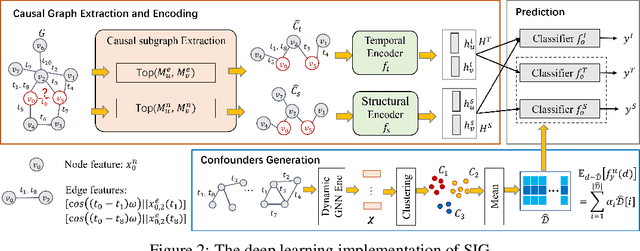

Abstract:While dynamic graph neural networks have shown promise in various applications, explaining their predictions on continuous-time dynamic graphs (CTDGs) is difficult. This paper investigates a new research task: self-interpretable GNNs for CTDGs. We aim to predict future links within the dynamic graph while simultaneously providing causal explanations for these predictions. There are two key challenges: (1) capturing the underlying structural and temporal information that remains consistent across both independent and identically distributed (IID) and out-of-distribution (OOD) data, and (2) efficiently generating high-quality link prediction results and explanations. To tackle these challenges, we propose a novel causal inference model, namely the Independent and Confounded Causal Model (ICCM). ICCM is then integrated into a deep learning architecture that considers both effectiveness and efficiency. Extensive experiments demonstrate that our proposed model significantly outperforms existing methods across link prediction accuracy, explanation quality, and robustness to shortcut features. Our code and datasets are anonymously released at https://github.com/2024SIG/SIG.
LLMs can Find Mathematical Reasoning Mistakes by Pedagogical Chain-of-Thought
May 09, 2024Abstract:Self-correction is emerging as a promising approach to mitigate the issue of hallucination in Large Language Models (LLMs). To facilitate effective self-correction, recent research has proposed mistake detection as its initial step. However, current literature suggests that LLMs often struggle with reliably identifying reasoning mistakes when using simplistic prompting strategies. To address this challenge, we introduce a unique prompting strategy, termed the Pedagogical Chain-of-Thought (PedCoT), which is specifically designed to guide the identification of reasoning mistakes, particularly mathematical reasoning mistakes. PedCoT consists of pedagogical principles for prompts (PPP) design, two-stage interaction process (TIP) and grounded PedCoT prompts, all inspired by the educational theory of the Bloom Cognitive Model (BCM). We evaluate our approach on two public datasets featuring math problems of varying difficulty levels. The experiments demonstrate that our zero-shot prompting strategy significantly outperforms strong baselines. The proposed method can achieve the goal of reliable mathematical mistake identification and provide a foundation for automatic math answer grading. The results underscore the significance of educational theory, serving as domain knowledge, in guiding prompting strategy design for addressing challenging tasks with LLMs effectively.
Where to Move Next: Zero-shot Generalization of LLMs for Next POI Recommendation
Apr 02, 2024Abstract:Next Point-of-interest (POI) recommendation provides valuable suggestions for users to explore their surrounding environment. Existing studies rely on building recommendation models from large-scale users' check-in data, which is task-specific and needs extensive computational resources. Recently, the pretrained large language models (LLMs) have achieved significant advancements in various NLP tasks and have also been investigated for recommendation scenarios. However, the generalization abilities of LLMs still are unexplored to address the next POI recommendations, where users' geographical movement patterns should be extracted. Although there are studies that leverage LLMs for next-item recommendations, they fail to consider the geographical influence and sequential transitions. Hence, they cannot effectively solve the next POI recommendation task. To this end, we design novel prompting strategies and conduct empirical studies to assess the capability of LLMs, e.g., ChatGPT, for predicting a user's next check-in. Specifically, we consider several essential factors in human movement behaviors, including user geographical preference, spatial distance, and sequential transitions, and formulate the recommendation task as a ranking problem. Through extensive experiments on two widely used real-world datasets, we derive several key findings. Empirical evaluations demonstrate that LLMs have promising zero-shot recommendation abilities and can provide accurate and reasonable predictions. We also reveal that LLMs cannot accurately comprehend geographical context information and are sensitive to the order of presentation of candidate POIs, which shows the limitations of LLMs and necessitates further research on robust human mobility reasoning mechanisms.
LIST: Learning to Index Spatio-Textual Data for Embedding based Spatial Keyword Queries
Mar 18, 2024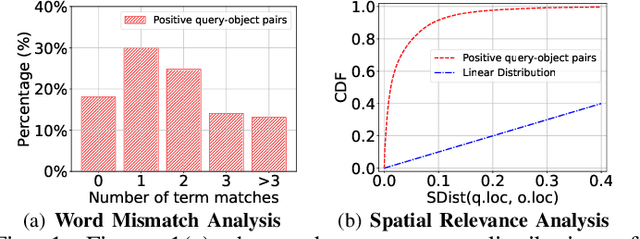
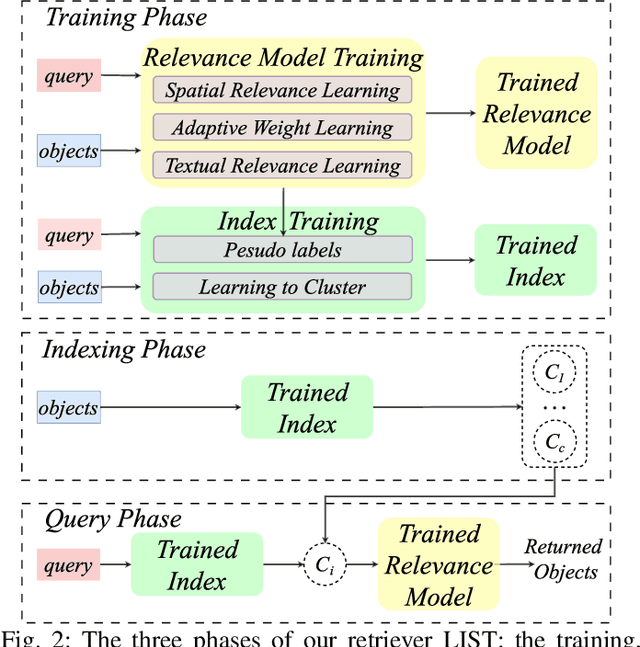
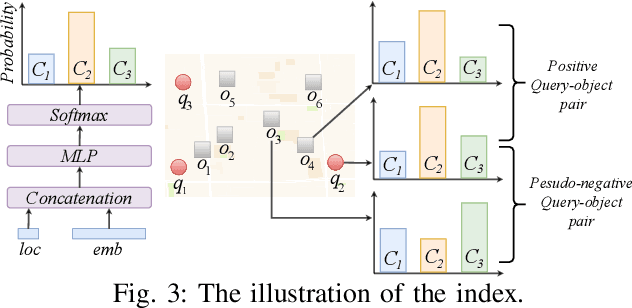
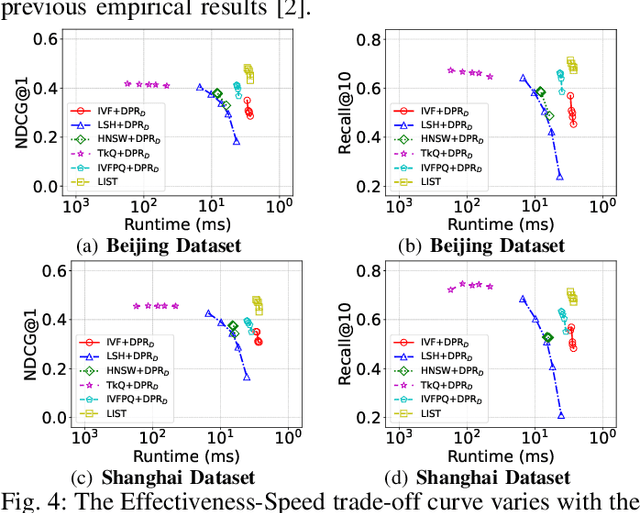
Abstract:With the proliferation of spatio-textual data, Top-k KNN spatial keyword queries (TkQs), which return a list of objects based on a ranking function that evaluates both spatial and textual relevance, have found many real-life applications. Existing geo-textual indexes for TkQs use traditional retrieval models like BM25 to compute text relevance and usually exploit a simple linear function to compute spatial relevance, but its effectiveness is limited. To improve effectiveness, several deep learning models have recently been proposed, but they suffer severe efficiency issues. To the best of our knowledge, there are no efficient indexes specifically designed to accelerate the top-k search process for these deep learning models. To tackle these issues, we propose a novel technique, which Learns to Index the Spatio-Textual data for answering embedding based spatial keyword queries (called LIST). LIST is featured with two novel components. Firstly, we propose a lightweight and effective relevance model that is capable of learning both textual and spatial relevance. Secondly, we introduce a novel machine learning based Approximate Nearest Neighbor Search (ANNS) index, which utilizes a new learning-to-cluster technique to group relevant queries and objects together while separating irrelevant queries and objects. Two key challenges in building an effective and efficient index are the absence of high-quality labels and unbalanced clustering results. We develop a novel pseudo-label generation technique to address the two challenges. Experimental results show that LIST significantly outperforms state-of-the-art methods on effectiveness, with improvements up to 19.21% and 12.79% in terms of NDCG@1 and Recall@10, and is three orders of magnitude faster than the most effective baseline.
HPCR: Holistic Proxy-based Contrastive Replay for Online Continual Learning
Sep 26, 2023Abstract:Online continual learning (OCL) aims to continuously learn new data from a single pass over the online data stream. It generally suffers from the catastrophic forgetting issue. Existing replay-based methods effectively alleviate this issue by replaying part of old data in a proxy-based or contrastive-based replay manner. In this paper, we conduct a comprehensive analysis of these two replay manners and find they can be complementary. Inspired by this finding, we propose a novel replay-based method called proxy-based contrastive replay (PCR), which replaces anchor-to-sample pairs with anchor-to-proxy pairs in the contrastive-based loss to alleviate the phenomenon of forgetting. Based on PCR, we further develop a more advanced method named holistic proxy-based contrastive replay (HPCR), which consists of three components. The contrastive component conditionally incorporates anchor-to-sample pairs to PCR, learning more fine-grained semantic information with a large training batch. The second is a temperature component that decouples the temperature coefficient into two parts based on their impacts on the gradient and sets different values for them to learn more novel knowledge. The third is a distillation component that constrains the learning process to keep more historical knowledge. Experiments on four datasets consistently demonstrate the superiority of HPCR over various state-of-the-art methods.
 Add to Chrome
Add to Chrome Add to Firefox
Add to Firefox Add to Edge
Add to Edge